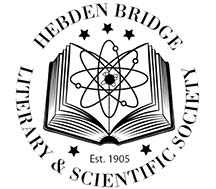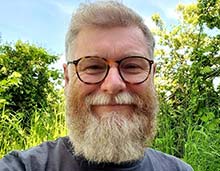Thursday, 23 March 2023

New Ways of Exploring the Universe : Report
Speaker: Professor Tim O'Brien
Multi-messenger astrophysics
The Lit&Sci website says, 'We know we've got it right when there's a full house and a buzz of excitement'. That was absolutely true when we experienced an inspirational presentation by Professor Tim O'Brien. This was the last event of the 2022/2023 season for the Lit&Sci and not only was the Waterfront Hall at maximum capacity, but the bristle of excitement, in anticipation of Tim's talk, was electric.
 Following on from some other recent packed events at Hebden Bridge Town Hall, which asked, 'Do you listen to the Archers?' or 'Do you like Whisky?' this one, in effect, asked, 'Do you want to hear about Multi-messenger astrophysics and learn about new ways of exploring the universe?' The answer was a resounding, 'Yes' from teachers of physics, physics graduates, students of physics, amateur astronomers, fans of Tim (whatever he chose to talk about), and audience members who, with little prior knowledge, just wanted to hear an expert who, with his wife, had won the 2014 Institute of Physics Kelvin Prize for Public Engagement. Here was someone who not only knew his subject, but could entice you to listen intently and be amazed, as well.
Following on from some other recent packed events at Hebden Bridge Town Hall, which asked, 'Do you listen to the Archers?' or 'Do you like Whisky?' this one, in effect, asked, 'Do you want to hear about Multi-messenger astrophysics and learn about new ways of exploring the universe?' The answer was a resounding, 'Yes' from teachers of physics, physics graduates, students of physics, amateur astronomers, fans of Tim (whatever he chose to talk about), and audience members who, with little prior knowledge, just wanted to hear an expert who, with his wife, had won the 2014 Institute of Physics Kelvin Prize for Public Engagement. Here was someone who not only knew his subject, but could entice you to listen intently and be amazed, as well.
The whole room seemed to warm to him straight away. From the very beginning, when we learned about how Jodrell Bank was linked through the Internet to many other telescopes around the world, he had us hooked. Immediately, here was someone who you would be keen to have as a friend, a brilliant teacher in your school or university, and an expert humble enough to realise that even his knowledge had its limits.
It was clear from the questions put by the audience at the end that those with a great knowledge of the subject had received confirmation from an eloquent mentor. They of course knew all about the wavelengths that were referred to throughout the talk: radio waves, microwaves, infrared, visible light, ultraviolet, x-rays, and gamma rays – and how even the information from these represents a tiny fraction of what is out there in the universe. When he left us with the notion of dark matter and dark energy, minds of the non-physicists in the audience seemed to expand exponentially.
All in all, we were treated to an evening full of stirring ideas, intriguing technical language, and wonderfully evocative terms such as, 'grazing incidence' which, we found out, is the critical angle that the side of the dish needs to be at to allow x-rays and gamma rays to slide down into the data devouring bowels of a telescope. Beyond that, we marvelled at his pictures of black holes and ideas about what the universe was like 13 billion years ago, not long after the Big Bang. As people left, many seemed to have only one question in their mind: 'When can he come back and tell us more?'
With thanks to Roger Gill for this report
The Lit & Sci website
More Lit & Sci coverage from the HebWeb

